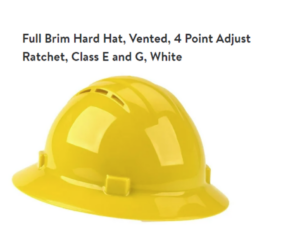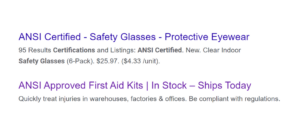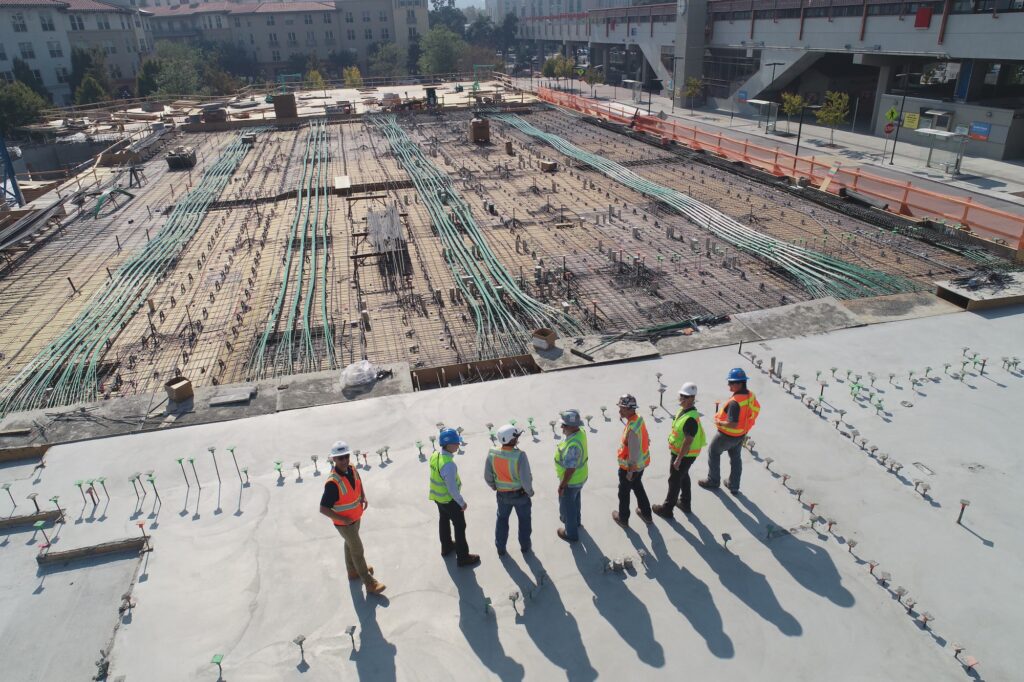Buying PPE Online
Tips for Finding the Right Safety Equipment
We’re buying more online than ever before, and it’s not just on Black Friday or Prime Day. Businesses are getting in on the game, too. U.S. B2B e-commerce volume will reach $3 trillion in 2027, growing at twice the rate of off-line sales.
The PPE and Safety Equipment industry isn’t immune to these trends. McKinsey predicts that online sales of PPE in 2024 will total a little over $3 billion, or 12% of the $25B U.S. market for B2B PPE. With 83% of B2B buyers preferring to order digitally, it’s critical for safety professionals to be informed consumers when it comes to navigating the minefield of B2B e-commerce. Here are a few recommendations on buying appropriate, required, and high-quality PPE/SE online.
TLDR: Top 4 Tips for Buying PPE Online
Buy from Trusted Sources
Know Your Standards
Watch for Red Flags
Trust But Verify
Red Flags To Watch Out For
The below screenshots were taken by ISEA in April 2024 from the websites of some of the world’s largest e-commerce platforms.

Products that Don't Meet Any Standard
The product in the image on the left is promoted as a High Visibility vest for Road, Construction, Fire Service and Survey workers. It has nearly 3,500 reviews with an average of 4.6 stars. However, a careful review shows that it doesn’t meet ANSI/ISEA 107-2020 (or any standard, for that matter). Despite this product being specifically marketed to workers, only a careful review will show that it doesn’t offer the on-the-job protection that most purchasers would expect.

Products With Features That Don't Make Sense
The product on the left makes an impossible claim. It’s promoted as Class E (offering protection up to 20,000 volts) while also being vented – an impossible combination under ANSI/ISEA Z89.1-2014 (R2019). The product description goes on to say that it is certified by both ANSI and ISEA, when neither organization certifies any type of PPE.

Misuse of Industry Terms
In a standards-driven industry like ours, details matter. ANSI doesn’t make, approve, certify, or test any products (click here for more details). There’s no such thing as “ANSI certified” safety glasses, for example. Any claims otherwise might indicate that the seller (or the platform) isn’t fully up to speed on the important details of the PPE and safety equipment business.

Products that Make Misleading Claims
The listing for the product on the left (listed as one platform’s “Choice”) has several problems. It says it’s “ANSI Class 2”, but its label doesn’t have the details required by ANSI/ISEA 107-2020 (and is therefore non-compliant). Further, nowhere in its listing does it say what standard it claims to meet (although it does purport to be “ANSI Certified”, another red flag). A recent ISEA “mystery shopping” initiative revealed that approximately 15% of Hi Viz products failed to meet the photometric requirements for retroreflective material in ANSI/ISEA 107-2020.
Go Deeper
Buy From Trusted Sources
- Know Your Options: Most distributors, home improvement big box stores, and some manufacturers sell PPE online. E-commerce hubs like Amazon, Alibaba, and eBay also sell PPE.
- Check Seller Names: On e-commerce hubs, seller names are similar, and can change frequently.
- Understand Liability: In contrast to traditional distributors or manufacturers, online retailers don’t always have the same liability if something goes wrong with your purchase.
Know Your Standards
- Know Your Standards: Familiarize yourself with the relevant standards for the products you want to buy. If that’s daunting, leave buying PPE online to the experts.
- Know Exactly What You Need: Don’t rely on an e-commerce seller to tell you if you need Class C or E head protection. Rely on a safety hazard assessment conducted by a trained safety expert.
- Details Matter: If you need a product that meets the current version of the standard, watch out for product that only meets an older version. It might not deliver the performance and protection you expect.
Trust But Verify
Typically, manufacturers obtain their own testing (either in-house or through a third party) to prove compliance to a specific standard. If you have any doubts or suspicions about a product, reach out to the manufacturer or seller and ask to see a copy of the testing papers for the product you wish to buy. Any reputable manufacturer or reseller should be happy to provide this information to you. Use the language on the right to get started.
Email to Request Testing Papers
Subject: Request for Product Testing Results
Dear [Recipient’s Name],
I am considering purchasing [PRODUCT NAME & SKU] and would like to be sent a dated copy of the most recent product testing/test lab report, to verify that it conforms to all appropriate safety standards. Thank you for your reply.
Kind regards,
[Your Name]
Many manufacturers only sell through authorized distributors. Not sure if the seller you’re interested in is authorized by the manufacturer? Check the manufacturer website, or reach out to them directly to confirm. What’s the risk of being PPE from an unauthorized distributor? They can be a potential source of counterfeit PPE, which might pose a serious risk to health and safety. This is an issue to take seriously: over 10 million counterfeit respirators have been seized by law enforcement in the U.S. alone in the last several years.
Email to Confirm Distributor Status
Subject: Request to Identify Authorized Distributor
Dear [Recipient’s Name],
I am considering purchasing [PRODUCT NAME & SKU] from [SELLER / DISTRIBUTOR NAME], and would like to confirm if they are an authorized distributor. If they are not, please send me a list of authorized distributors I can buy this product from. Thank you for your reply.
Kind regards,
[Your Name]

